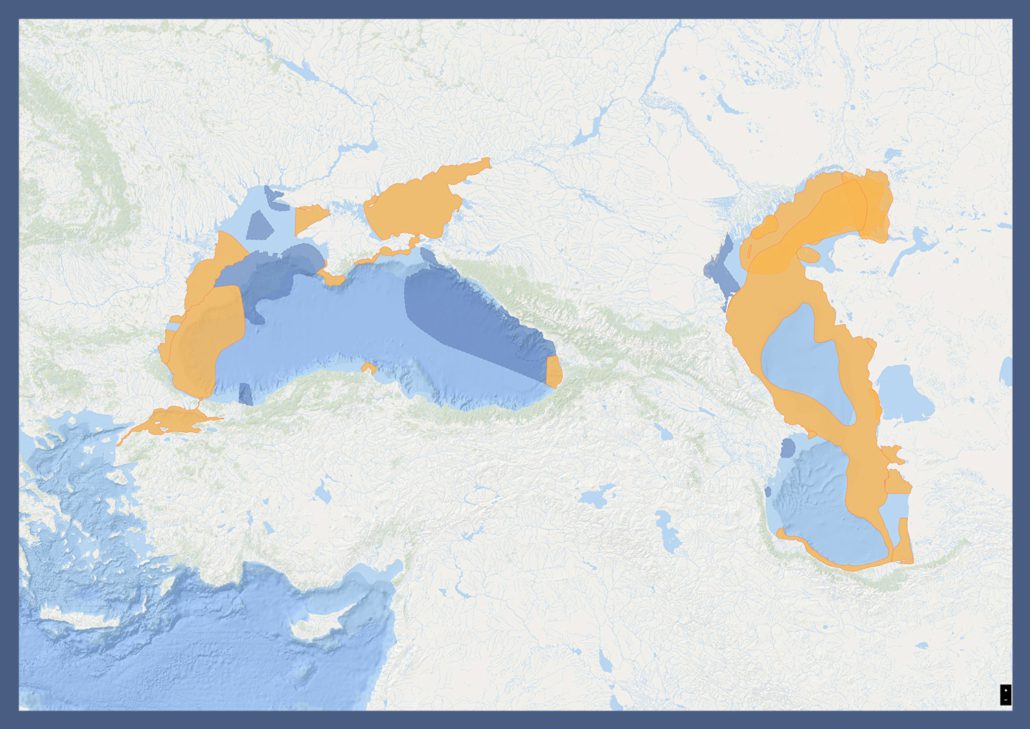Black Sea, Turkish Straits System and Caspian Sea
Virtual Meeting, 22-26 February, 2021
Black Sea, Turkish Straits System and Caspian Sea IMMA Workshop Executive Summary
From 22 to 26 February 2021, the Regional Workshop for the Identification of Important Marine Mammal Areas in the Black Sea, Turkish Straits System and Caspian Sea was held as a virtual meeting, with the goal of identifying and delineating Important Marine Mammal Areas — IMMAs. The workshop started with 53 preliminary Areas of Interest (pAoI) from the Black Sea and Turkish Straits System and 20 pAoI from the Caspian Sea. Of the total 73 pAoI—32 were submitted by invited experts, 14 were marine protected areas (MPAs) in the World Database of Protected Areas, 24 were Ecologically or Biologically Significant Areas (EBSAs) identified under the Convention on Biological Diversity, and 3 areas had been identified as Cetacean Critical Habitats (CCH) through the Convention on Migratory Species regional agreement ACCOBAMS1. Added to these 73 pAoI, there were 19 pAoI submitted by participants on the first day of the workshop, to give a total of 92 pAoI for consideration. One by one, these 92 pAoI were considered in the breakout groups and in plenary, utilising dedicated selection criteria to support identification in the expert-based process. Many of the pAoI were overlapping but provided useful additional information. By workshop day five, 23 areas were recommended to go forward as candidate IMMA (cIMMA) proposals to be evaluated by the review panel. Following independent review and consideration of how, for each cIMMA, the scientific information met the IMMA criteria, some cIMMAs were rejected and most needed either minor or major revision by the participants who were points of contact. In some cases, cIMMAs were recommended for merging, which required further consultation between subregional groups. In total, after revisions were made with considerable effort by the participants and members of the IMMA Secretariat, 14 IMMAs were accepted for full status as meeting the criteria. Of the remaining cIMMAs, 1 area was considered to show strong evidence of merit as a future IMMA, even though it did not receive full IMMA approval, so it will remain as a cIMMA until it can fully satisfy the criteria. The remaining areas from the review process thus became AoI, joining 4 AoI recommended by the workshop and making a total of 11 AoI to go on the e-Atlas.
